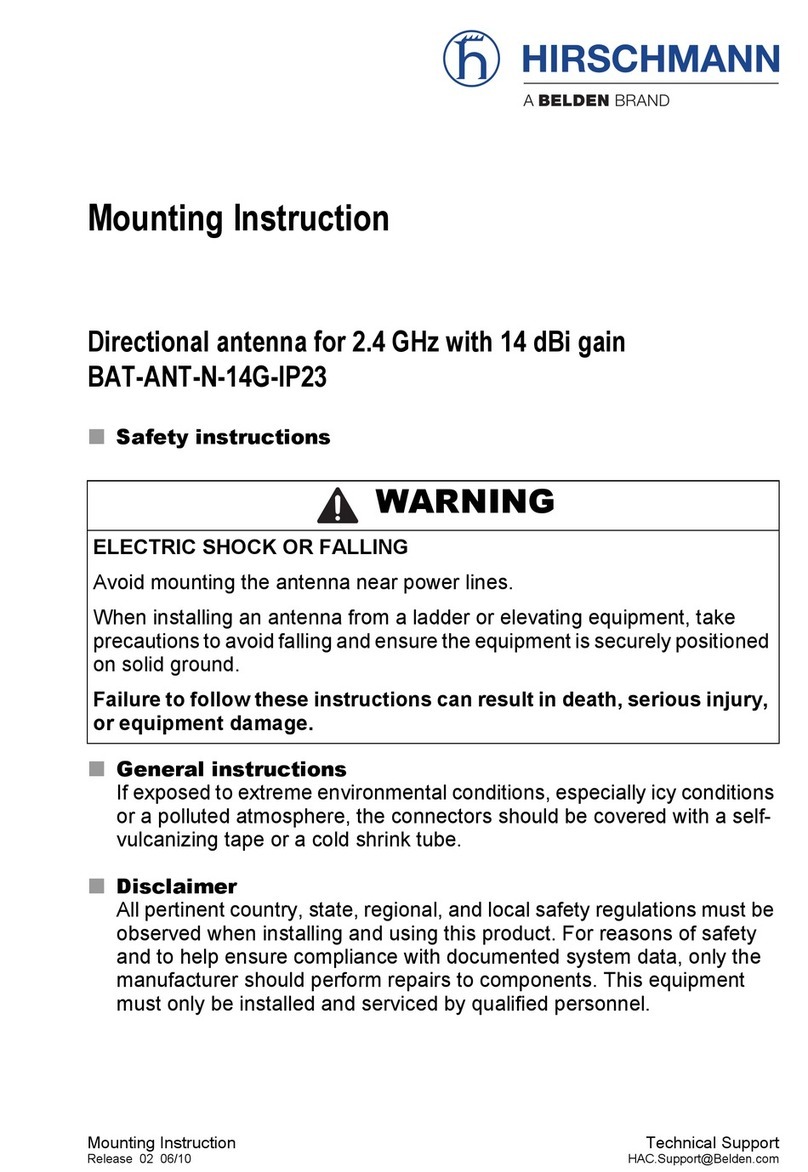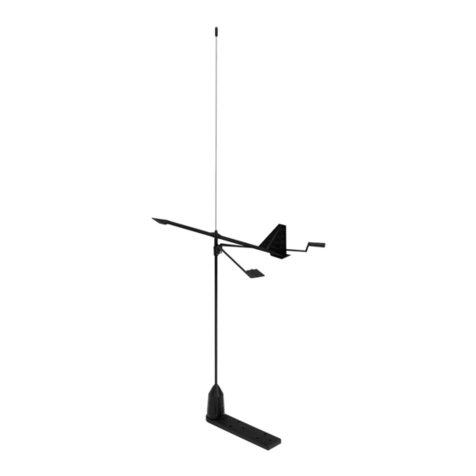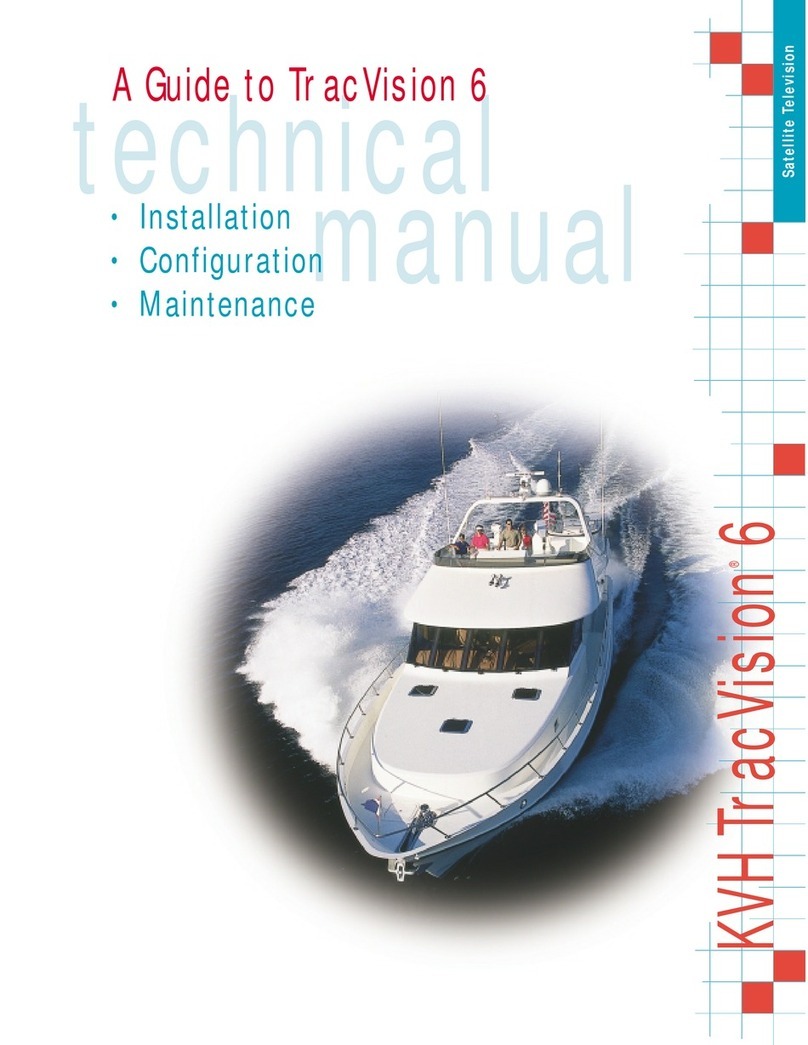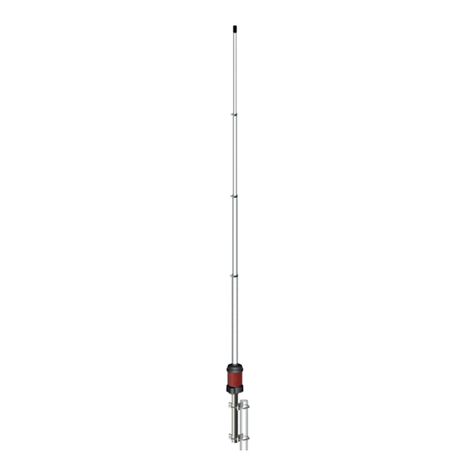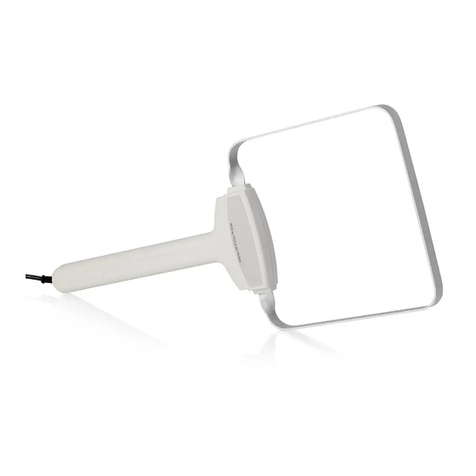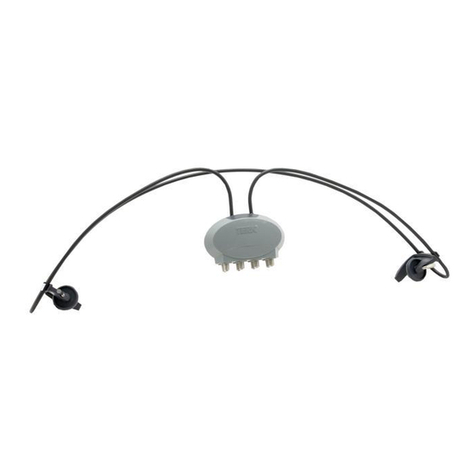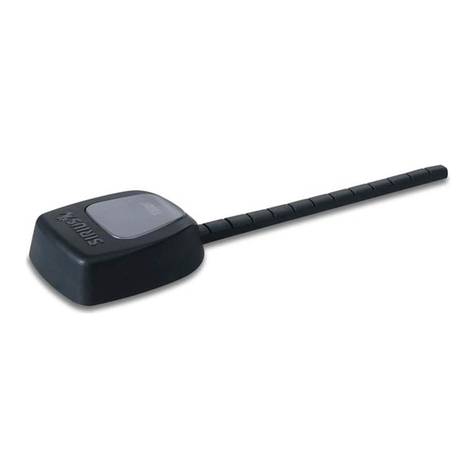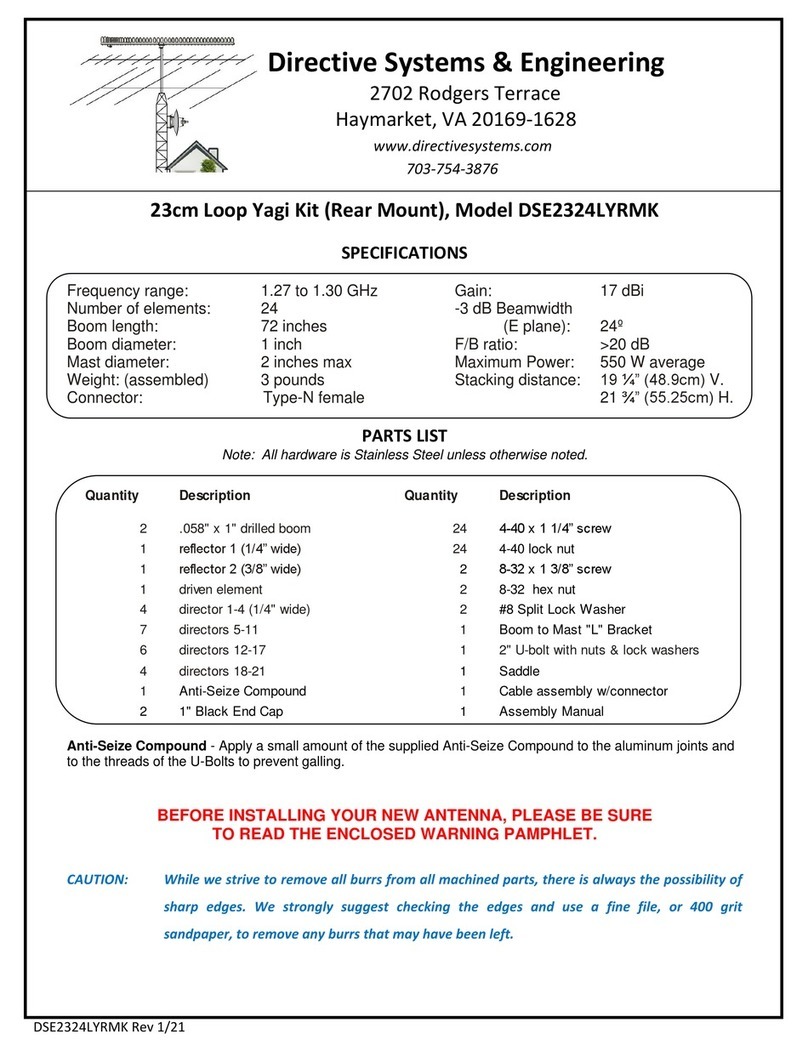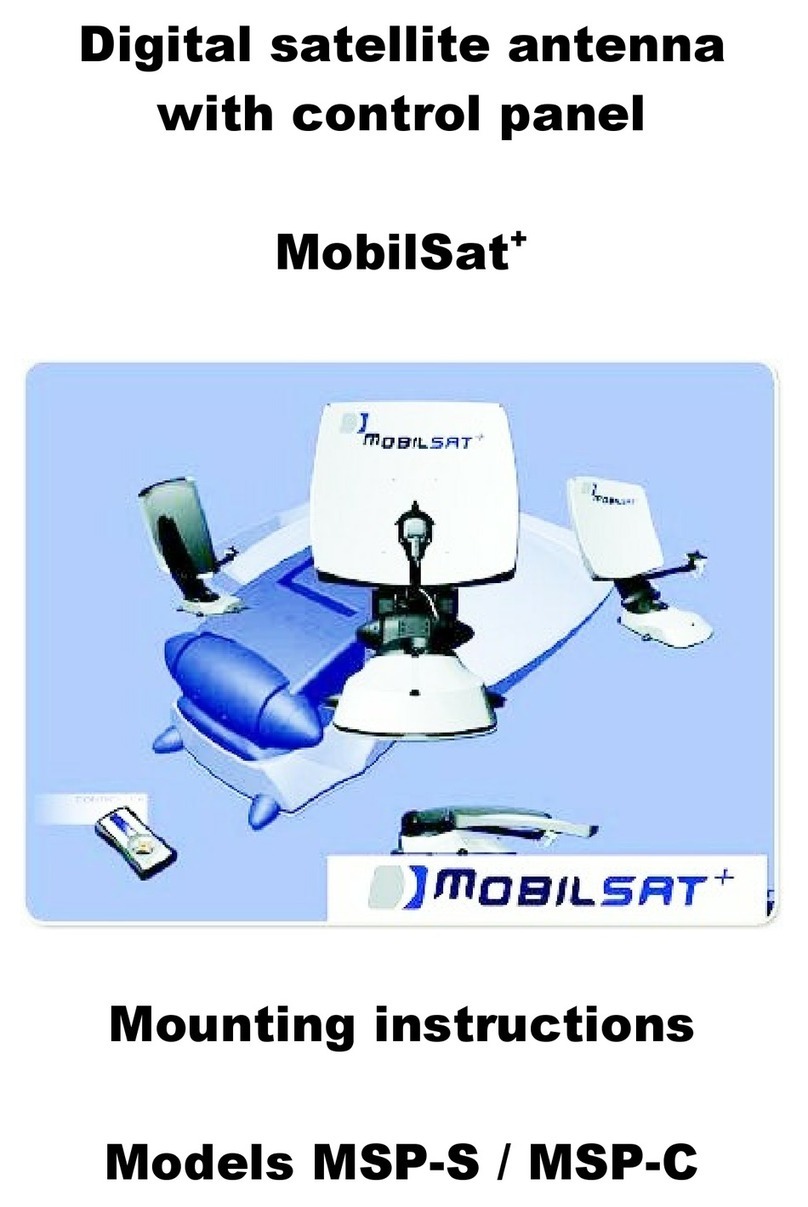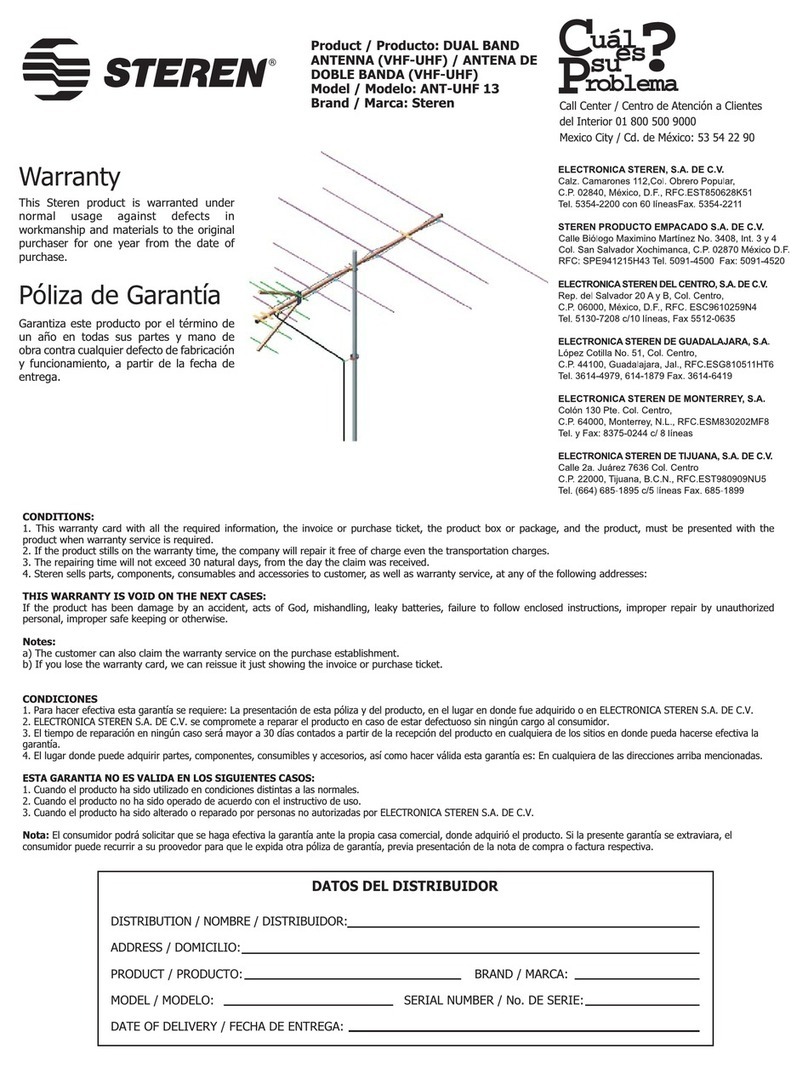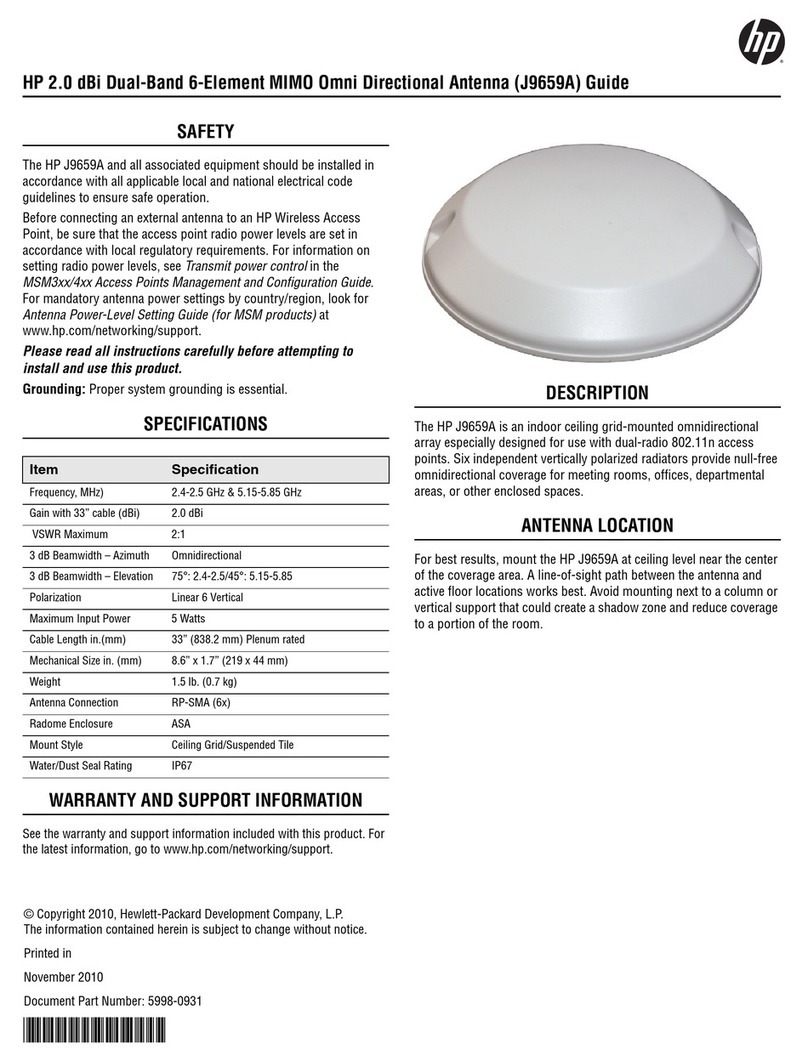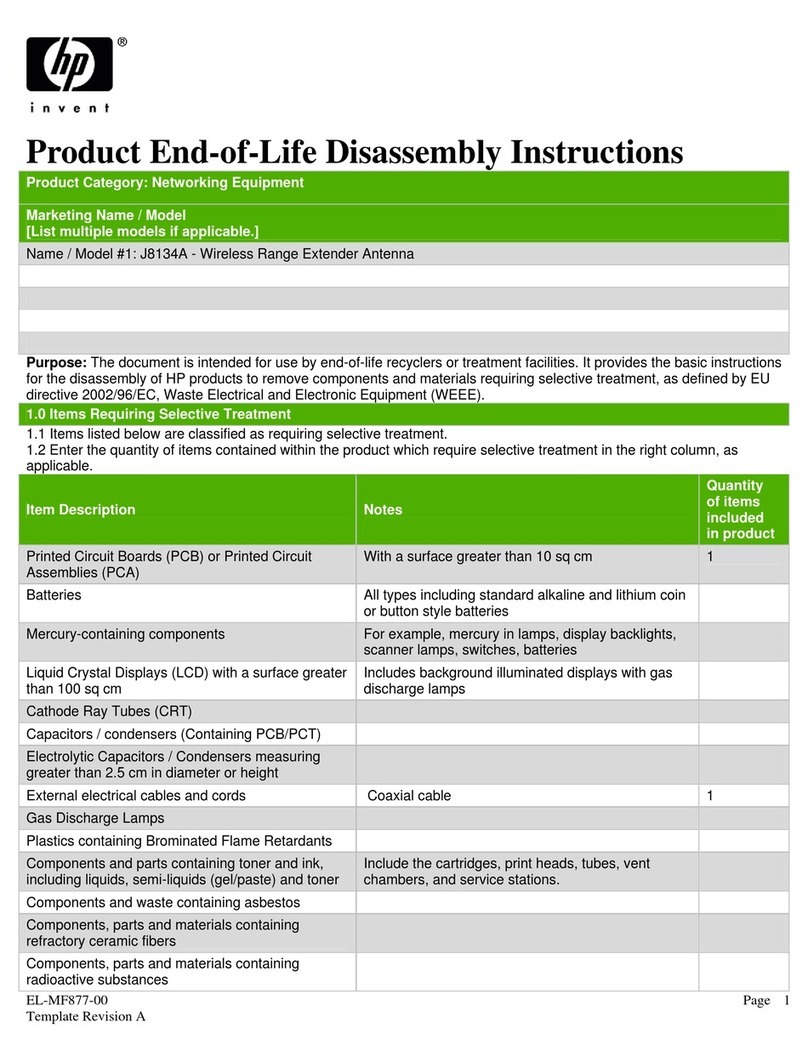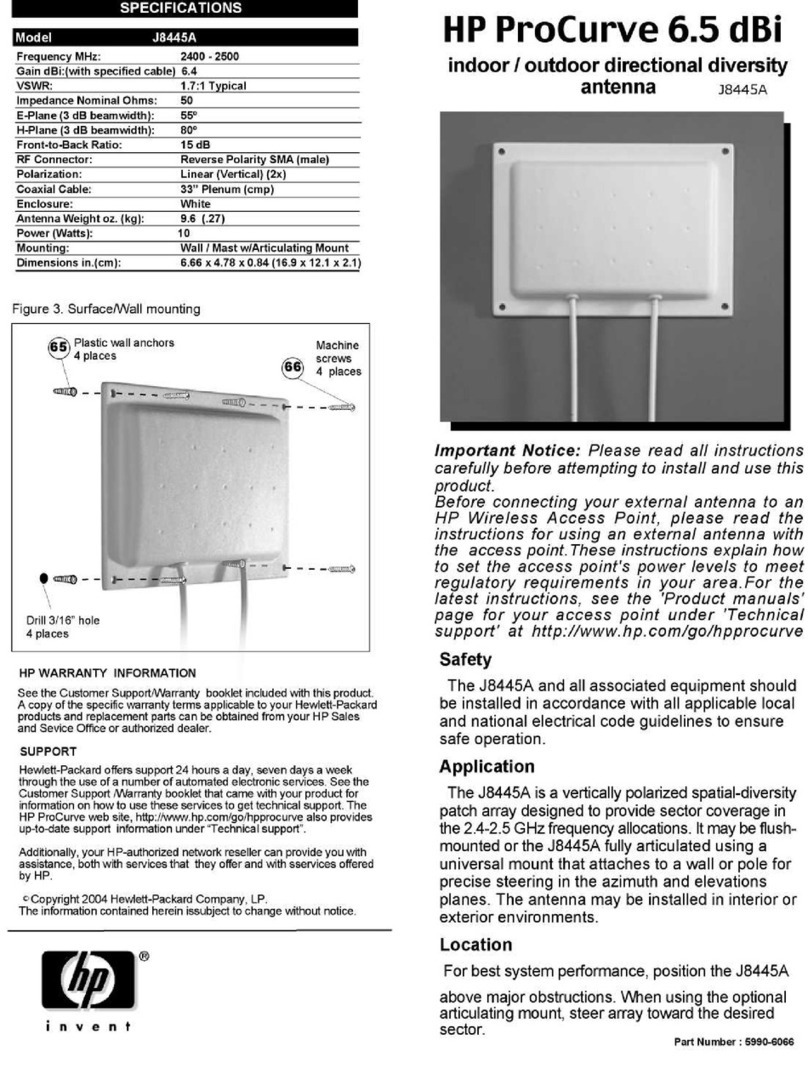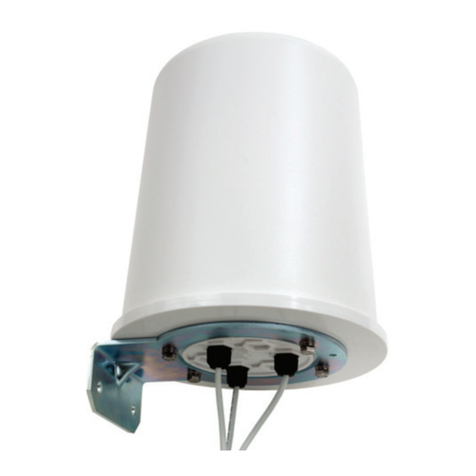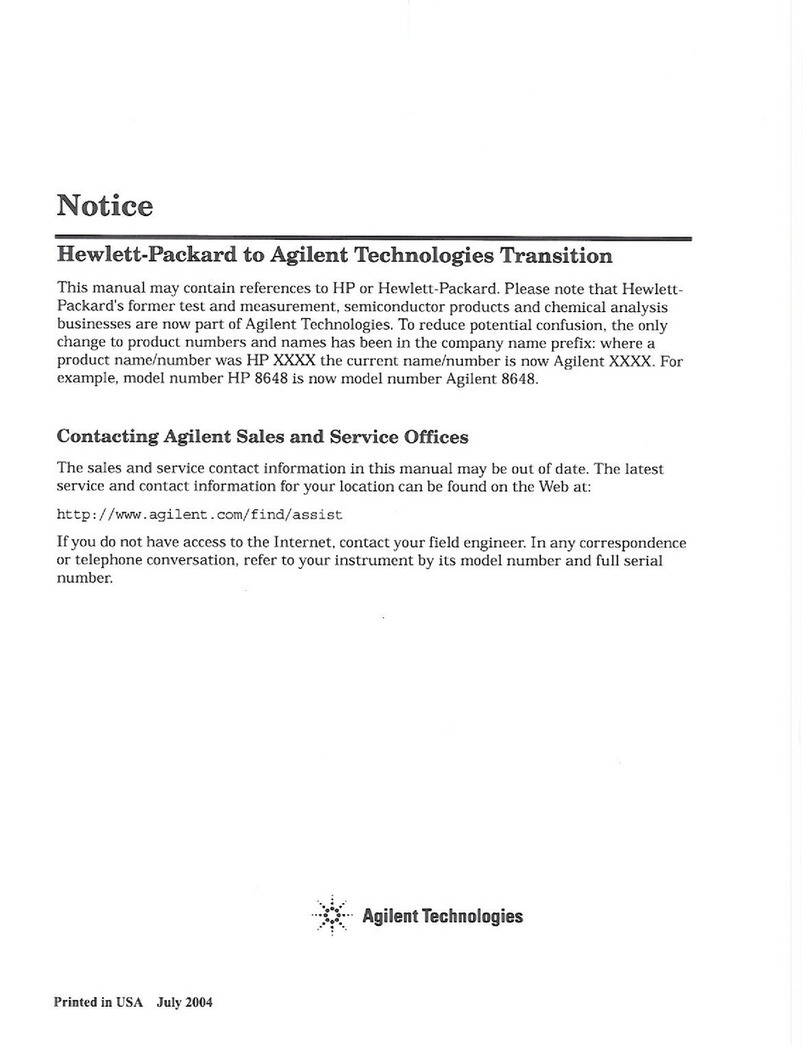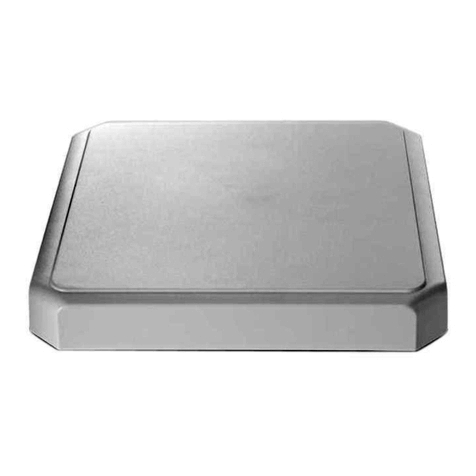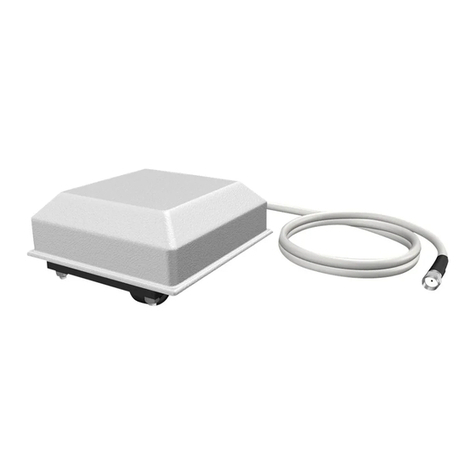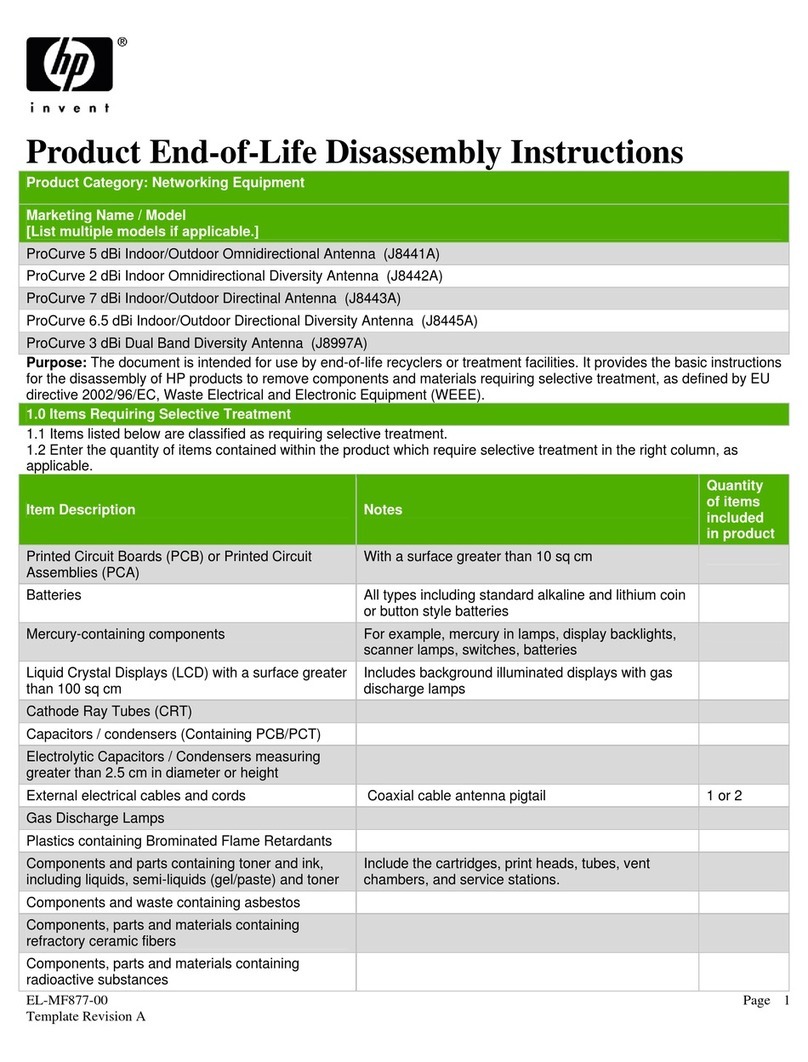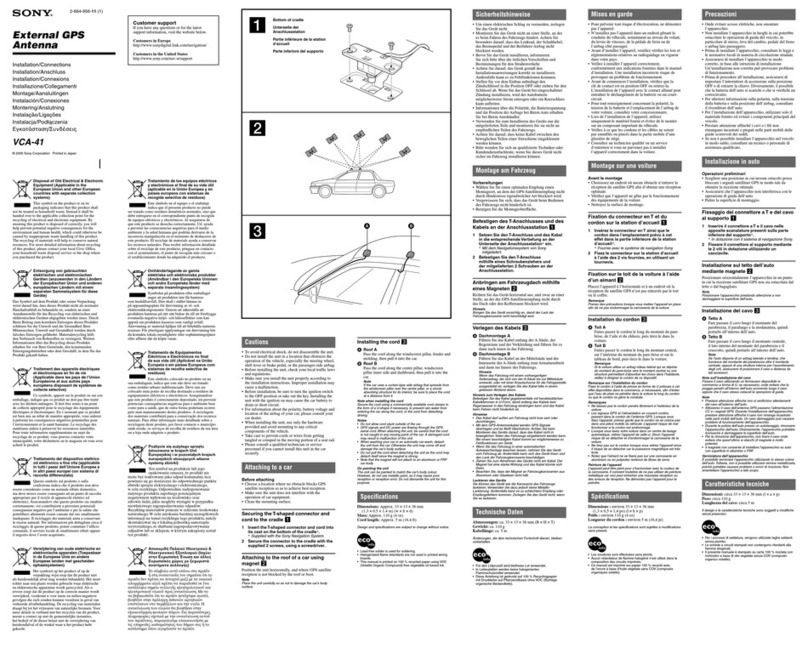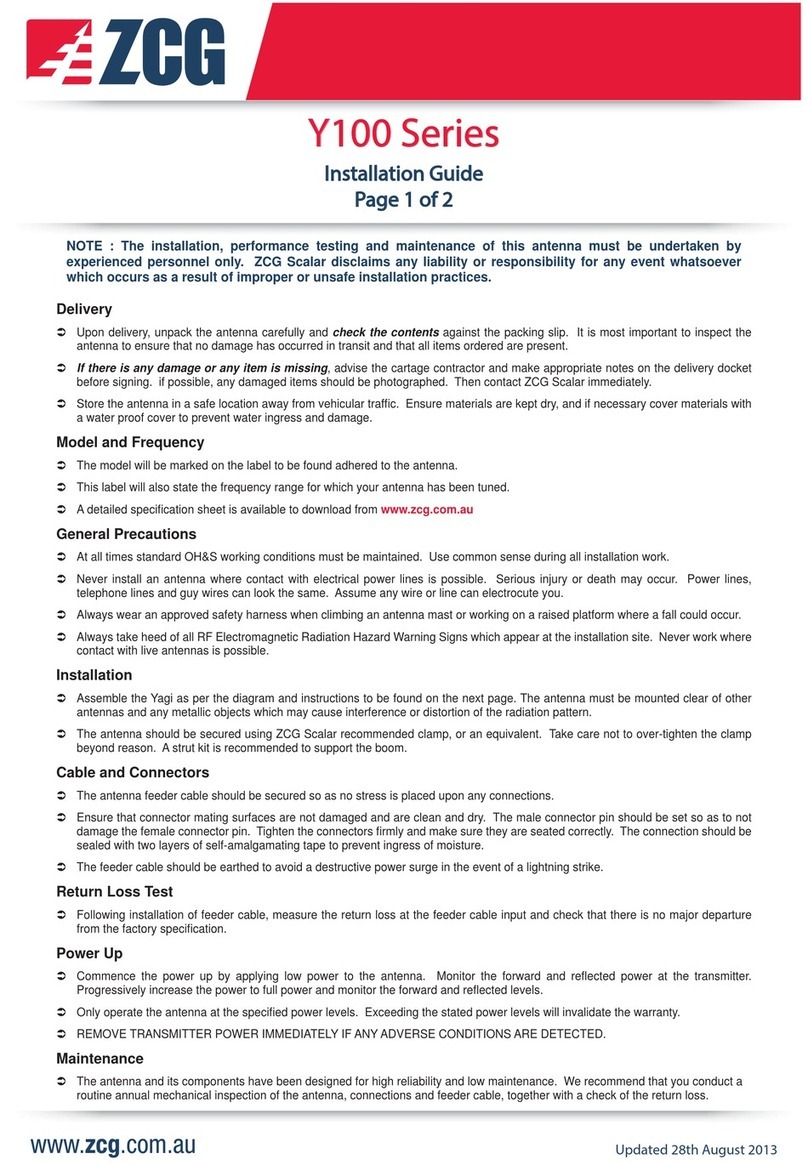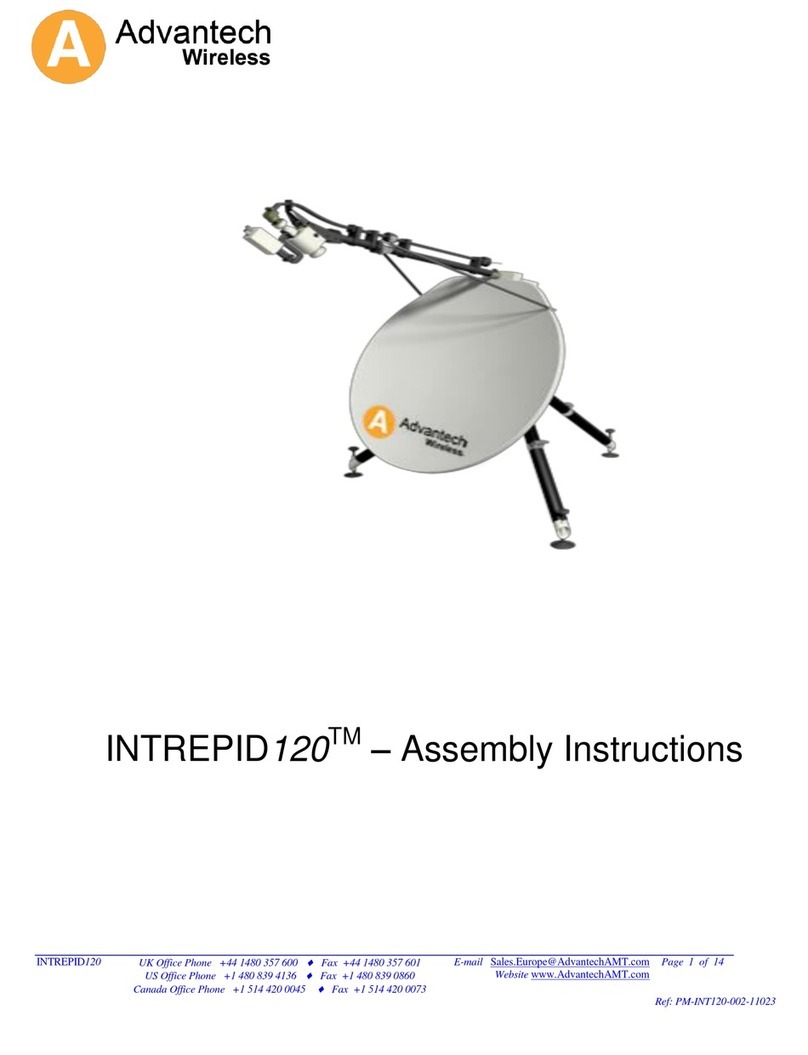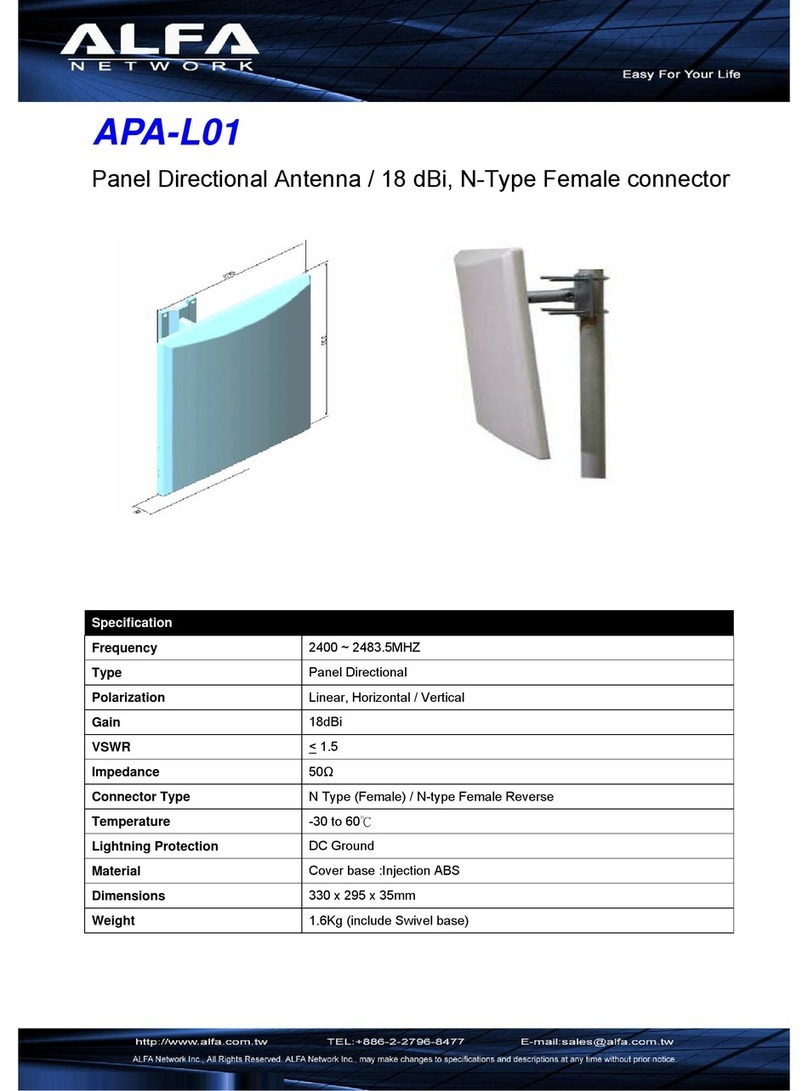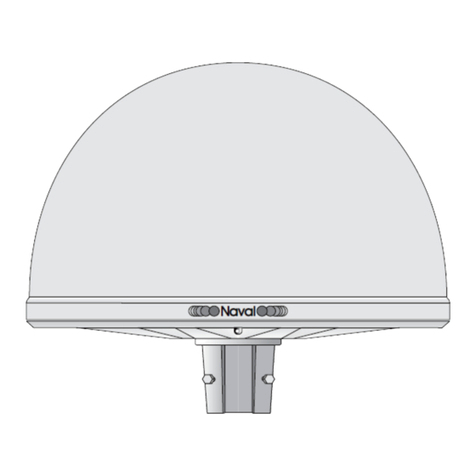
Item
Frequency, MHz 2400-2500
Gain with specied cable (dBi) 4.4
VSWR nominal 1.5:1
Weight lb. (kg) 0.3 (0.14)
Dimension, in. (cm) 9 (22.9)
Wind Surface Area ft2 (m2) 0.08 (0.007)
Wind Survival mph (km/hr) 125 (200)
Power Handling (Watts) 50
Radiating Element Plated copper laminate
Enclosure Polycarbonate
RF Connector Reverse SMA (male)
Cable 33-inch CMP Plenum
SAFETY
The HP ProCurve J8441A and all associated equipment should be
installed in accordance with applicable local and national electrical code
guidelines to ensure safe operation.
Before connecting an external antenna to an HP ProCurve Wireless
Access Point, be sure that the access point radio power levels are set
in accordance with local regulatory requirements. For information on
setting radio power levels, see
Transmit power control
in the
MSM3xx/4xx Access Points Management and Conguration Guide
.
For antenna power settings by country/region, visit the online manuals
page for your access point at www.hp.com/go/procurve/manuals.
Please read all instructions carefully before attempting to
install and use this product.
APPLICATION
The J8441A is a high-performance omnidirectional collinear antenna
used for 2.4 GHz RF-distribution systems. Its attened radiation pattern
focuses energy along the horizontal plane to provide extended coverage
in large rooms or vaulted areas (see Figure 1). The J8441A may also be
pole-mounted for use in exterior locations.
ANTENNA LOCATION
For best results, mount the HP ProCurve J8441A at ceiling or roof level
near the center of the coverage area. A line-of-sight signal path between
the antenna and active oor location generally works best. Although
2.4 GHz signals penetrate cubical dividers and interior partitions with little
attenuation, reinforced block walls, banks of metal cabinets, glass walls,
or steel shelving may attenuate signals or cause multipath, a condition
where reected signals interfere with the primary signal. Avoid mounting
next to a column or vertical support that could create a shadow zone of
reduced coverage to one portion of the room. Each antenna comes with a
T-bar mount, an I-beam clamp, and a U-bolt style pole mount.
SPECIFICATIONS
WARRANTY AND SUPPORT INFORMATION
See the warranty and support information included with this product.
For the latest information, go to www.hp.com/go/procurve/support.
© Copyright 2010, Hewlett-Packard Development Company, L.P.
The information contained herein is subject to change without notice.
Printed in
Part Number: 5998-0306
: System grounding and lightning protection are
essential, especially for exterior-mounted antennas exposed to the
elements. Never install an antenna where it may fall and contact
electrical lines.
*5998-0307*
J8444A
*5998-0306*
J8441A
*5998-0305*
J8997A
F

